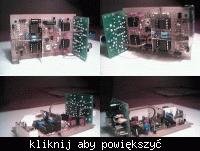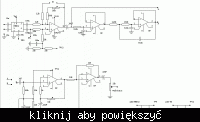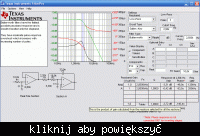Vermes
Advanced Member level 4


The principle of operation of homodyne receiver is direct conversion of received signal to acoustic signal. Sensitivity of such receiver depends on amplification of used stages of small frequency. Selectivity depends on used filters in it. The amplification should be as great as possible – about 100dB.
A lot of solutions and schematics useful when making this construction can be found on the Internet. You can find the simplest receivers with a mixer (the most often it is popular NE612 which is directly connected with a single stage of small frequency, such as popular LM386.
Such a receiver operates properly, but it has no basic features such as: gain, minimum selectivity, and noises of this receiver are of an unacceptable level, especially when using LM386 and its operation with the greatest amplification.
Using any power amplifiers of high frequency is a bad solution, because it will be even worse to the receiver.
So, after viewing many schematics, you have to design your own receive track of your homodyne. To make it, you can use your knowledge gained from the solutions and schematics you watched before.

The track should be divided into three parts, mixer with amplifier of adjustable amplification, active low-pass filter and then the signal is amplified again in a two-stage operational amplifier of adjustable amplification.
Mixer was based on NE612, which is symmetrically connected to the stage on operational amplifier OP27. It has low noises and additionally it is cheap.
The amplifier has adjustable voltage amplification in the range 50-100, 40dB maximum plus 3 dB resulting from symmetric connection with the mixer. In your calculation you should also add typical amplification of the conversion NE612, which is 14dB/50MHz according to the note sheet.
The total amplification is 57dB.
Another part is the low-pass filter, based on two operational amplifiers. The system of the filter is two-degree Butterworth filter in Sallen-Key topology, calculated using the program FilterPro.
Characteristics and system of such designed filter:

And now the last part of two-stage amplifier. A ready made kit of microphone amplifier was used. The amplifier operates on US NE5532 which includes a double operational amplifier.
Voltage amplification of this stage is adjustable and is within 10 to 100, or 20dB-40dB, from which the signal should be fed through the volume control to any low frequency amplifier for listening to the speaker.
To sum up, the total max amplification of low frequency of the receiver is 57dB + 40dB = 97dB.
This value should be reduced by approximately 4dB of suppression by the filter, what will give the maximum amplification of 93dB.
You can also bypass the filter, then the signal is taken directly from the output of first amplifier, and you can compare whether the filter has an impact on work of the device.
Note! Filter resistors and capacitors tolerance should be as small as possible. When the range of values of these components is too wide, filter characteristics is going to be different.
The schematic in the final stage of the amplifier shows used US OP27, but during the performance of the prototype (on a universal board) you can use a ready made amplifier board on US NE5532.

Link to original thread (useful attachment) - Podstawowy zespół odbiornika SSB o bezpośredniej przemianie.